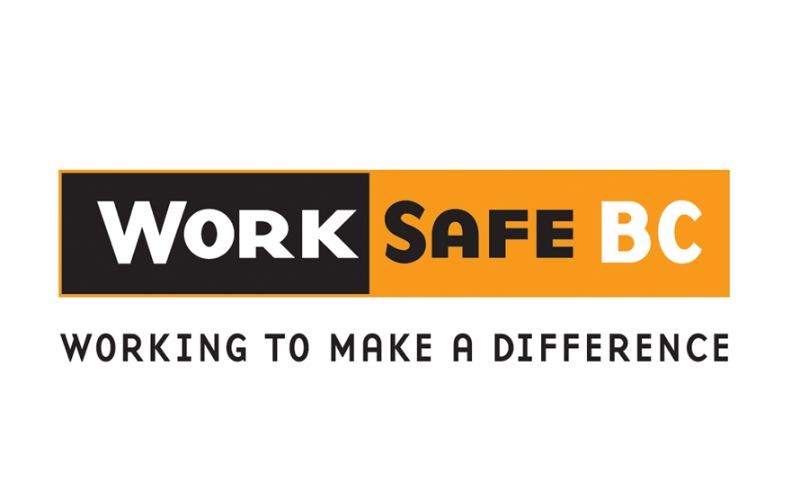Forest companies appear to have controlled wood dust in their sawmills and pellet plants following deadly explosions in 2012, but WorkSafeBC continues to keep the pressure on to ensure safety.
The province's chief workplace safety agency began a series of inspections targeting wood dust beginning in 2012 after two explosions at sawmills in northern B.C. that killed four workers and injured dozens of others.
The sixth and latest round of inspections -- this one of more than 100 sawmills and more than a dozen pellet plants last year -- showed that none were cited for having accumulations of dust considered a risk of fire or explosion, according to more than 1,000 pages of inspection documents obtained by The Vancouver Sun through a freedom of information request.
Previous inspections, including in 2013 and 2014, found dozens of mills had unacceptable wood dust levels.
Despite finding no wood-dust levels considered a risk for explosion in 2015, WorkSafeBC issued six orders calling for improvements to dust-control programs where they believed plants were not being cleaned well enough.
B.C.-based lumber-giant Canfor was issued three such orders at its sawmills in Fort St. John, Vanderhoof and Prince George.
Carrier Lumber in Prince George, Flavelle Sawmill in Port Moody, and Long Hoh Enterprises in Qualicum Beach were also issued similar orders.
Joe Kozek Mills in Revelstoke was issued an order for using pressurized air to clean up dust (considered unsafe because it creates clouds of fine dust) and Teal Cedar in Surrey was cited for not being able to provide information on the design of ventilation equipment used to control dust.
Canfor and Long Hoh Enterprises were issued warning letters and Carrier Lumber was fined $30,000.
Canfor is appealing its orders, and Carrier Lumber is appealing the fine.
"We have communicated to WorkSafe why we feel the orders were not justified and provided documentation to support that," Canfor spokeswoman Corrine Stavness said in a written statement.
"I think the bigger story here is that the industry and WorkSafe have made a tremendous amount of progress on managing combustible dust."
Carrier Lumber president Bill Kordyban said he also thought that significant progress was being made.
"We take it very, very seriously," said Kordyban, noting the company has added a position dedicated to overseeing wood dust control.
The two mills that exploded in 2012 and since rebuilt with dust control in mind -- Babine Forest Products and Lakeland Mills -- passed inspections.
WorkSafeBC also found no wood dust issues in inspections at major companies West Fraser, Tolko, Western Forest and Interfor.
Ken Higginbotham, a spokesman for a group of 10 major lumber producers, said audits are used to ensure dust control is being managed properly.
In addition to implementing housekeeping procedures to control dust, companies have spent significant money on dust-control equipment upgrades including new ventilation systems.
West Fraser said it has spent about $50 million. Canfor said it has spent about the same.
"Out of the terrible nature of those two incidents I think there's a much greater focus on maintaining the dust management, but at the same time looking at safeguarding," says Higginbotham, a former Canfor executive.
WorkSafeBC vice-president for prevention services Al Johnson agreed there has been significant progress in addressing combustible dust in sawmills, but said where the regulator sees gaps or deficiencies in dust control they order them to be fixed.
He said they were particularly concerned that Canfor, a major player in the forest industry in B.C., was having trouble delivering on their dust control plans.
They brought company executives into a meeting to reiterate the importance of maintaining dust control, he said.
Johnson said he was aware that Canfor was appealing the orders, noting they had the right to do so. "Combustible dust is a high-risk situation," said Johnson. "Any health and safety program that addresses combustible dust or respiratory protection or asbestos or whatever the issue may be, needs constant vigilance and constant oversight."
Johnson said they will transition away from inspection sweeps targeted specifically at wood dust control in 2016, making wood dust monitoring part of routine inspections.
However, he said mills that were handed orders would likely be inspected by officers specializing in wood dust control at least once more.
Okanagan Pellet in West Kelowna and Diacarbon Energy in Merritt were cited for using pressurized air to clean dust.
Rogers Environmental Pellet in Fort St. John was cited for an inadequate dust control program, similar to the orders issued to the sawmills.
After a poor showing in inspections in 2014, companies have stepped up with a major effort to tackle dust, said Canadian Pellet Association president Gordon Murray.
They struck a combustible dust committee among plants in B.C., implemented audits, housekeeping procedures and equipment upgrades, said Murray.
"We work in a hazardous industry and need to be really vigilant," he said.



